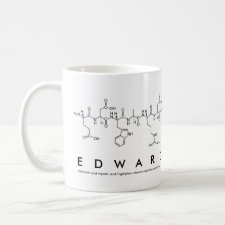
Authors: Alenazi NA, Lai EPC, Manthorpe JM
Article Title: Enhanced selectivity of a molecularly imprinted polymer toward the target molecule via esterification of non-specific binding sites with diazomethane.
Publication date: 2014
Journal: Journal of Molecular Recognition
Volume: 27
Issue: (12)
Page numbers: 755-762.
DOI: 10.1002/jmr.2402
Abstract: Diazomethane (CH2N2) was used to methylate the non-specific binding sites after molecularly imprinted polymer particles were prepared using methacrylic acid as the functional monomer, ethylene glycol dimethacrylate as the cross-linker and bisphenol A (BPA) as the template. After diazomethane treatment and subsequent removal of BPA by triethylamine, the treated molecularly imprinted polymer (TMIP) particles were tested for binding selectivity toward BPA and other organic compounds by capillary electrophoresis with ultraviolet detection. Even in the presence of compounds that were positively charged, neutral or negatively charged in the background electrolyte, BPA was selectively bound with the highest efficiency. A significant decrease in the affinity for metformin (MF, a positively charged compound), along with 13C nuclear magnetic resonance spectra and electrophoretic mobility data, provided strong evidence for the elimination of non-specific -COOH binding sites in the TMIP particles. Only 8% of MF and 16% of diclofenac sodium salt (a negatively charged compound) remained as non-specific bindings because of hydrophobic interactions. Further comparison with poly(methyl methacrylate) revealed the true merits of the TMIP, which exhibited minimal non-specific bindings while preserving a high level of specific binding owing to molecular recognition. Copyright © 2014 John Wiley & Sons, Ltd
Template and target information: bisphenol A, BPA
Author keywords: Binding test, bisphenol A, diazomethane, molecularly imprinted polymer, non-specific binding sites, selectivity, site-selective chemical modification



Join the Society for Molecular Imprinting

New items RSS feed
Sign-up for e-mail updates:
Choose between receiving an occasional newsletter or more frequent e-mail alerts.
Click here to go to the sign-up page.
Is your name elemental or peptidic? Enter your name and find out by clicking either of the buttons below!
Other products you may like:
 MIPdatabase
MIPdatabase









